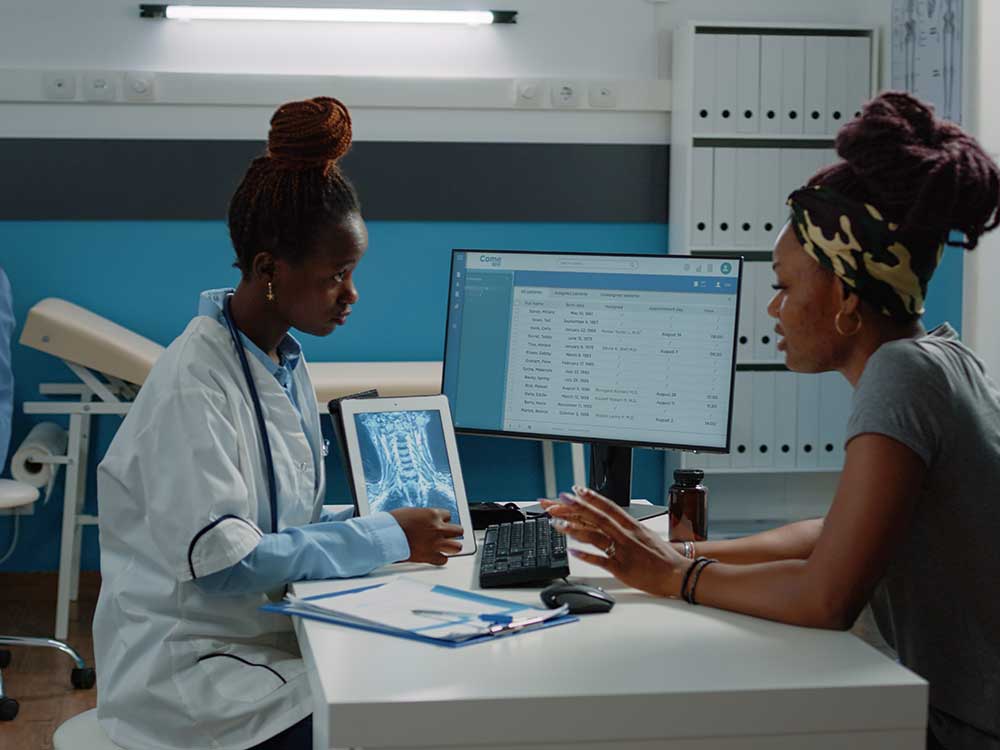Comprehending the Secret Roles and Duties in Medical Administration
Comprehending the Secret Roles and Duties in Medical Administration
Blog Article
Best Practices in Medical Management for Improving Effectiveness and Lowering Expenses
In the ever-evolving landscape of medical care, the pursuit of ideal methods in medical administration is critical for boosting efficiency and curbing expenditures. By integrating innovative innovations such as electronic health and wellness documents and telemedicine, medical care companies can enhance operations and boost patient care.
Leveraging Advanced Modern Technology
The combination of electronic services into healthcare systems has transformed the method centers run, simplifying procedures and enhancing person care. By streamlining client details, EHRs remove the demand for difficult paperwork and promote smooth interaction amongst healthcare suppliers.
Telemedicine is one more technological innovation that has transformed client interaction. It uses ease for both patients and medical care professionals by enabling remote examinations, which can minimize the need for in-person sees and enhance consultation scheduling. In addition, telehealth systems can extend medical care accessibility to country or underserved areas, connecting voids in treatment distribution.
In addition, making use of Expert system (AI) and artificial intelligence is coming to be significantly common in predictive analytics, allowing for early discovery of potential health issues and even more informed decision-making. These modern technologies, when incorporated successfully, can enhance diagnostic precision and individualize person therapy strategies, ultimately leading to enhanced health care end results and functional effectiveness.
Optimizing Resource Allowance
Effective resource allowance is essential for maximizing the performance of clinical management. By strategically handling resources such as workers, devices, and finances, health care centers can considerably boost their functional efficiency, improve person outcomes, and minimize unnecessary expenses. The initial step in optimizing source appropriation entails performing an extensive analysis of existing possessions and recognizing areas where resources might be underutilized or overextended. This analysis must be data-driven, utilizing metrics and analytics to inform decision-making procedures.
Prioritizing source allocation based upon patient demands and service needs is essential. This involves lining up resources with high-demand areas, such as emergency treatment or specialized treatments, to ensure prompt and effective client treatment. Implementing flexible staffing models can also maximize labor resources by readjusting personnel allocation in action to varying individual volumes. In addition, accepting telemedicine and various other technological services can alleviate physical source constraints by offering different opportunities for patient-provider interactions.
Financial sources should be thoroughly checked and designated with critical foresight to support both temporary functional requirements and long-term institutional goals. This consists of investing in training programs that boost staff proficiencies and embracing energy-efficient techniques that minimize operational costs (medical administration). Ultimately, an enhanced resource allowance approach fosters a lasting health care atmosphere that is responsive, effective, and monetarily prudent
Streamlining Process Processes
When healthcare centers purpose to improve functional effectiveness, enhancing workflow processes comes to be a critical focus. Effective workflows decrease redundancy, get rid of unneeded steps, and enhance coordination among health care professionals. This strategy not only increases service distribution yet additionally improves the quality of client care.

Following, modern technology combination plays a substantial duty in improving workflows. Executing electronic wellness records (EHRs) and computerized physician order entrance (CPOE) systems reduces paperwork, minimizes human error, and ensures information is available to all relevant workers. In addition, leveraging telemedicine platforms can streamline patient assessments and follow-ups, reducing the pressure on physical framework.

Ultimately, structured process result in set you back reductions and boosted individual complete satisfaction, fostering an extra lasting medical care setting.
Enhancing Data Monitoring
Building upon streamlined workflows, enhancing information administration comes to be an essential part in advancing healthcare management. Efficient information management systems are important for keeping exact individual documents, boosting decision-making, and guaranteeing compliance with governing requirements. By carrying out durable data monitoring options, healthcare centers can improve the high quality of individual care while simultaneously reducing functional costs.
One trick aspect of improving data management is the integration of innovative electronic wellness record (EHR) systems. These systems promote the smooth exchange of individual info across various departments, lowering duplication of examinations and minimizing mistakes. A well-designed EHR system supports information analytics, enabling doctor to identify fads and make informed decisions regarding individual treatment.
Furthermore, securing patient data is extremely important. Adopting detailed cybersecurity measures, including security and normal audits, guarantees the stability and discretion of sensitive information. This not only shields patients however additionally keeps the institution's track record.
Purchasing team training is another vital variable. Educating healthcare specialists on information monitoring practices enhances their ability to efficiently make use of modern technology, leading to improved person results. Finally, improving data administration with sophisticated innovation and detailed training is necessary for attaining efficiency and cost reduction in medical management.
Fostering Collaborative Interaction
A crucial component ahead of time clinical administration is fostering collaborative communication amongst medical care specialists. Efficient communication is critical for guaranteeing smooth person treatment, enhancing treatment end results, and decreasing mistakes. By encouraging open dialogue and control throughout multidisciplinary teams, healthcare companies can improve their operational efficiency and lower unnecessary costs.
Central to this strategy is the combination of interaction technologies such as digital health and wellness records (EHRs) and secure messaging systems, which help with the rapid exchange of crucial person info. read the full info here These tools allow health care companies to access and share information in real time, making certain that all staff member are informed and straightened in their decision-making processes. Furthermore, routine group conferences and interdisciplinary rounds can further advertise a culture of collaboration and accountability.
Educating programs focused on enhancing communication skills are likewise necessary. Inevitably, promoting collaborative interaction leads to boosted healthcare distribution and price financial savings.

Verdict
Incorporating innovative technology, such as digital wellness records and telemedicine, alongside optimized resource allowance and streamlined process processes, is vital for boosting efficiency in medical management. Efficient data monitoring and fostering joint interaction amongst healthcare teams are vital for decreasing redundancies and improving treatment top quality. By focusing on preventive care and participating in high quality improvement efforts, healthcare organizations can achieve substantial cost savings and boosted individual end results, therefore ensuring lasting health care delivery in an increasingly intricate environment.
Report this page